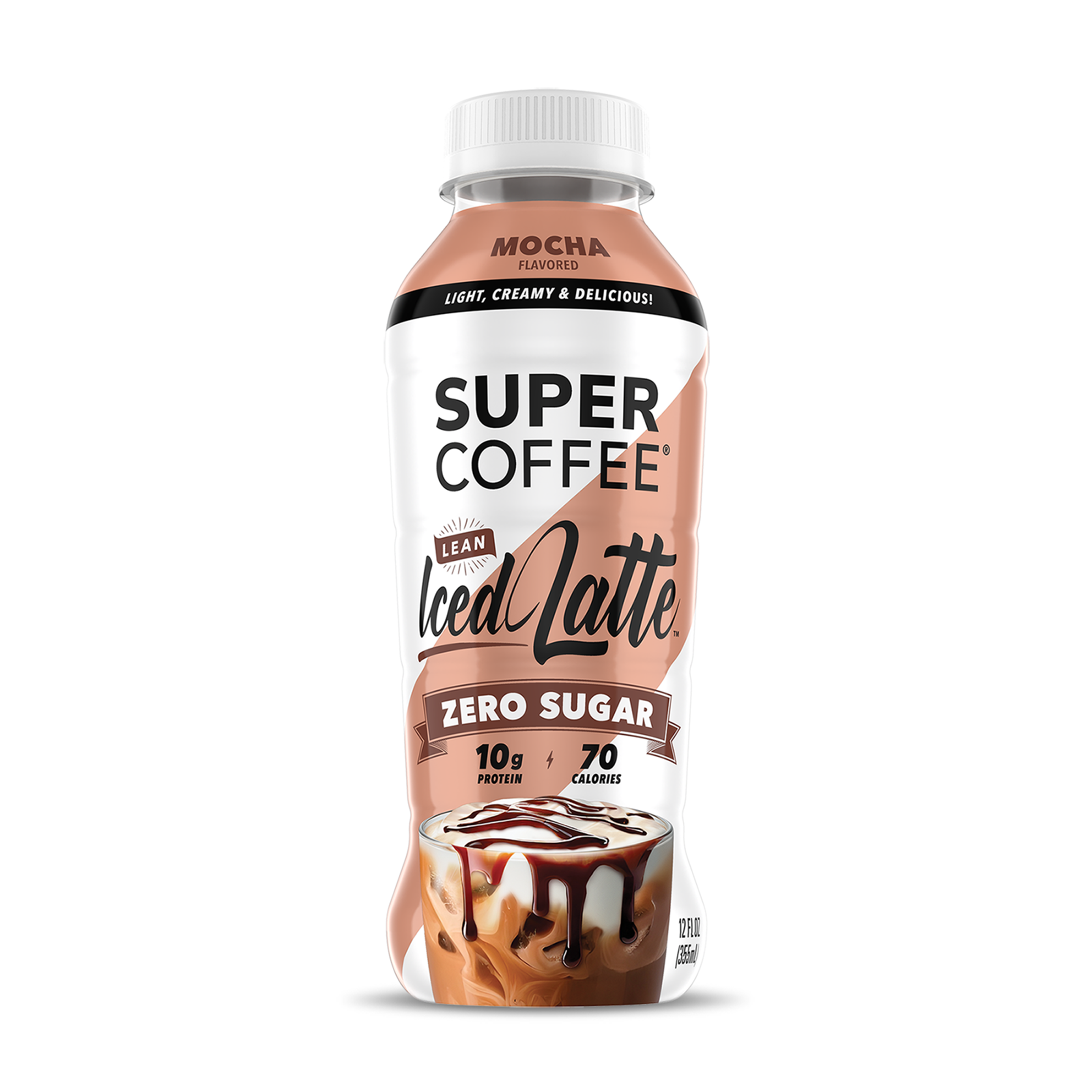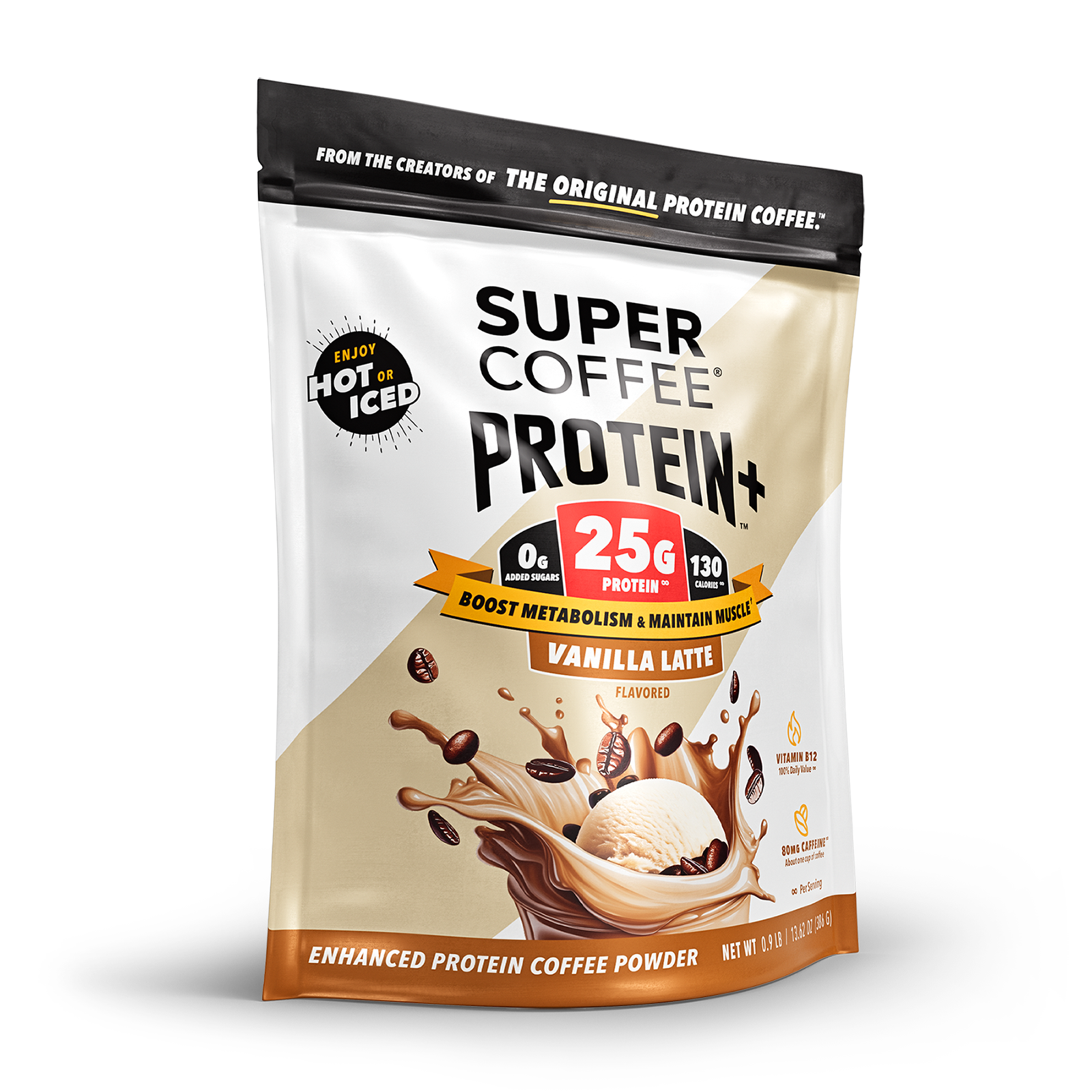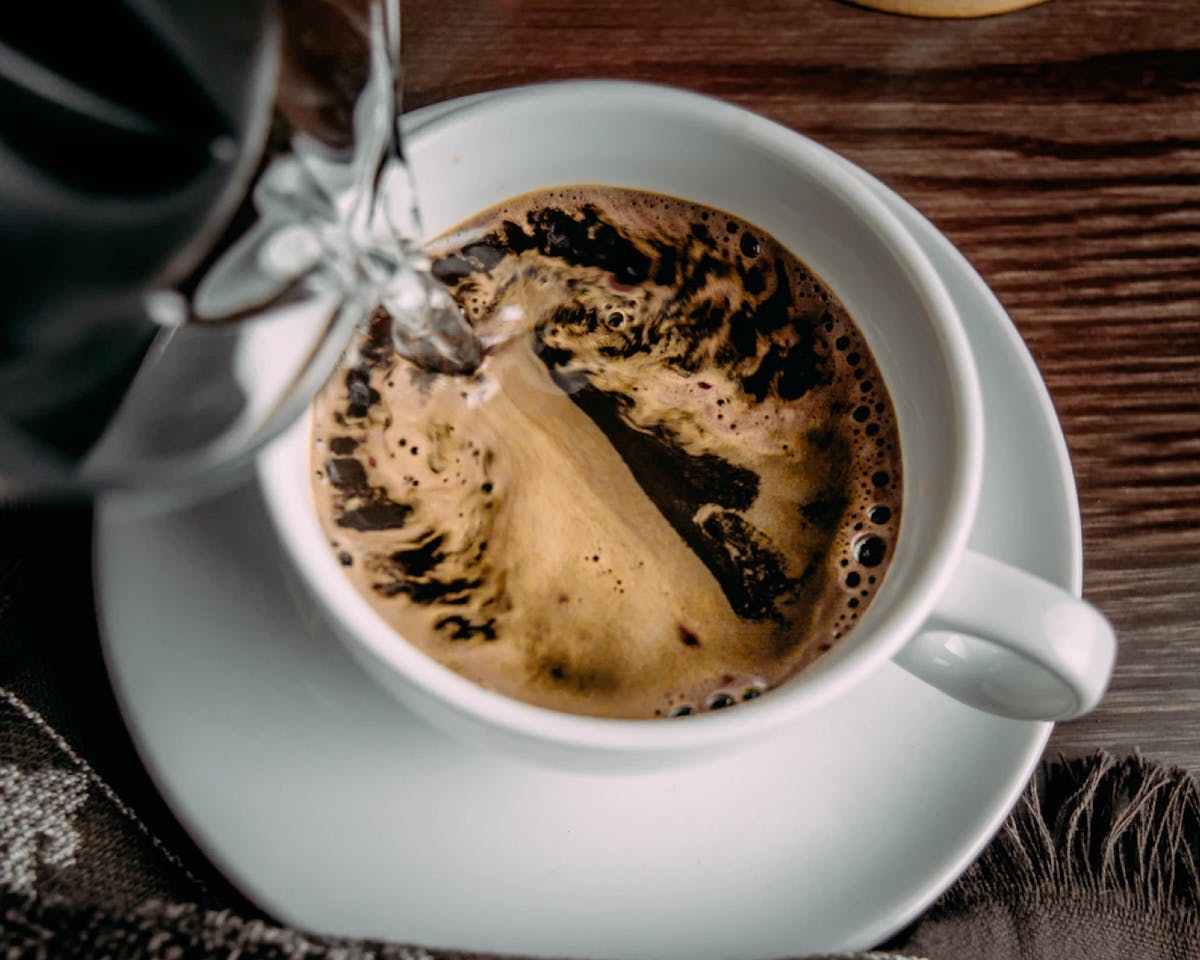Your cart is empty
What do you like for breakfast?
For some, it’s a quick bowl of cereal. For the health-conscious, it might be Greek yogurt and berries, or maybe some flaxseed waffles. Traditionalists will make bacon and eggs, or a stack of pancakes. Those in a rush might grab an Egg McMuffin on their way to work or school.
No matter the breakfast, though, it will almost always be accompanied by either coffee or tea.
It’s a good idea to start the day with a caffeinated beverage – with the obvious exceptions of sodas or energy drinks, which are loaded with sugar, carbs and calories. Caffeine will not only wake you up and increase your alertness; it can also improve your brain function, elevate your mood and even boost your performance if you hit the gym before work.
(Pro tip: have that cup of coffee after you eat. Research shows that black coffee before breakfast can wreak havoc with blood glucose levels.)
But what if you’re a tea person instead of a coffee person? Will tea provide the same benefits?
Short answer: Sort of.
Slightly longer answer: Yes, but you’d need to drink more tea than coffee – because the two beverages contain different amounts of caffeine.
Why Do Coffee and Tea Contain Caffeine?
Caffeine occurs naturally in about five dozen plants, most of which are native to the Southern Hemisphere or East Asia. The plants create the substance in order to deter pests and herbivores, to attract honey bees, and to stop germination in neighboring plants.
The best-known sources of caffeine are the fruit or leaves of just a few plants:
- Coffee beans from the coffee plant
- Tea leaves from the Camellia sinensis plant (often known as the tea plant), used to brew black tea, white tea and green tea
- Cocoa beans from the cacao plant
Caffeine is also present in kola nuts (once used to make Coca-Cola and Pepsi, now chewed for medicinal purposes in some cultures), guarana (often added to energy drinks) – and yaupon holly, yerba mate and guayusa, the only types of herbal tea that contains caffeine.
“What about caffeinated beverages like soda?” we hear you ask. You’re right. There is caffeine in most soft drinks, primarily the brown ones. At one time, caffeine was extracted from coffee beans and added to soda; these days, manufacturers add synthetic caffeine that’s been produced in factories (most of them in China). The same goes for energy drinks, although as we’ve mentioned, some add guarana (or guayusa) for an added caffeine boost.
The good news: synthetic and natural caffeine are chemically identical. The not-so-good news: there are very few regulations governing synthetic caffeine, and few inspections of the facilities that make it.
So tea and coffee naturally contain caffeine. But the amount of caffeine in a cup of black tea or a cup of matcha, a cup of coffee or an espresso shot, can vary widely.
What Determines How Much Caffeine Is In Coffee?
Two factors are responsible for the amount of caffeine in a cup of coffee: the type of coffee beans used and the way the beans are brewed.
Caffeine and Coffee Beans
Let’s start with the two main types of beans, Arabica and robusta. Generally speaking, unroasted green Arabica beans have about half the caffeine content of robusta beans. The amount of caffeine in different varietals does vary, but only slightly.
Why is there such a difference? Robusta plants are able to grow in more hostile environments than Arabica plants because they’re better able to fight off threats to their survival. Some of the biggest threats are inspects and pests – and since caffeine is an effective insect repellent, it’s believed robusta plants evolved to contain higher caffeine levels, in order to protect themselves.
Varietals matter, but so do growing conditions. Studies have found that the altitude at which coffee plants are grown, and even the amount of shade they get, affect their caffeine content. For example, plants grown at high altitudes contain 10% less caffeine, on average, than those grown at medium-high altitudes. And since robusta usually grows at lower altitudes where there are greater numbers of pests, it needs more caffeine to survive.
One important note: the widespread belief that lighter roasts contain more caffeine than darker beans is not literally true – because coffee beans lose mass and density the longer they are roasted. A scoop of light roast will indeed have more caffeine than a scoop of dark roast. But a pound of light roast will have less caffeine than a pound of dark roast – because of their difference in mass.
So a cup of dark roast may often be “high caffeine” compared to a cup of light roast, simply because you need more beans or grounds to brew it.
Caffeine and Coffee Preparation
The way you make your coffee will have a major impact on how much caffeine it contains. There are three key factors:
- Grind size: A fine coffee grind provides more surface area for extraction, meaning that more caffeine will be extracted in the brew. With a coarse grind there’s more coffee “packed” into each piece, so less caffeine can be extracted.
- Brew time: The longer you brew coffee, more caffeine will be extracted. (Another common belief debunked: more pressure won’t extract more caffeine. That would take much more pressure than you can create with even an espresso machine or French press.)
- Temperature: Higher temperatures do produce more caffeine content – but not in the range used to brew coffee. Espresso, home brewing and commercial brewing machines all use approximately the same temperatures. What about cold brew coffee, which should theoretically contain less caffeine because it’s made with cold water? Actually, it will initially have a higher caffeine level, because it’s made with at least twice the amount of coffee grounds. But when cold brew concentrate is diluted for drinking, its caffeine content ends up being about the same as regular brewed coffee.
We do need to discuss temperature in our next section, though.
What Determines How Much Caffeine Is In Tea?
The factors are similar to the ones we’ve just discussed. The amount of caffeine in tea depends largely on the type of tea leaves used and the way the tea is made.
You might think that all types of tea would contain the same amount of caffeine, since they are all produced from the leaves of the Camellia sinensis plant. However, it’s not quite that simple. The leaves used to make black tea are oxidized after they’re picked; oxidation is why black tea is black, and it also makes caffeine more available. White tea is only slightly oxidized, and green tea isn’t oxidized at all. That explains their difference in appearance and flavor, and their lower caffeine content. (Oolong’s content is similar to that of green tea.)
The amount of leaves used to brew tea has an impact as well. Standard-sized tea bags all contain the same amount of leaves, of course, but you can brew a more highly-caffeinated pot or cup of tea by using a large amount of loose leaf tea. And naturally, the longer the steeping time, the more caffeine that will be transferred from the leaves.
Finally, we get to temperature. Hot water used to make tea usually doesn’t reach the same temperatures generated in a coffee machine, so less caffeine will be released. Boiling water will create a more-caffeinated cup than warm water; conversely, real cold-brewed tea (not regular iced tea) will contain about half the caffeine that you’ll find in a cup of hot tea.
Caffeine in Coffee vs. Caffeine in Tea: The Bottom Line
Most people don’t choose coffee vs. tea on the basis of caffeine content. But those who do will usually get more caffeine from a cup of coffee than they will from a cup of tea.
Here’s the rundown courtesy of the Mayo Clinic, using average caffeine content and a standard eight-ounce serving (except for espresso). As we’ve discussed, every serving of coffee and tea will be different, depending on where it comes from and how it’s made.
- Brewed Coffee: 96 milligrams of caffeine in the average cup
- Decaffeinated Brewed Coffee: 2 milligrams (Yes, decaf coffee does contain a little residual caffeine)
- Instant Coffee: 62 milligrams
- Decaffeinated Instant Coffee: 2 milligrams
- Expresso Shot (one ounce): 64 milligrams
- Decaf Espresso Shot (one ounce): 0 milligrams (it really is caffeine-free)
- Brewed Black Tea or Iced Tea: 47 milligrams
- Brewed Green or White Tea: 28 milligrams
- Decaffeinated Brewed Tea: 2 milligrams
- Matcha: 70 milligrams
- How do those numbers compare with other caffeinated drinks? Most sodas and energy drinks contain between 20-30 mg of caffeine per eight ounce cup. The average energy shot has more than 200 mg.
So tea (with the exception of matcha) contains about half the amount of caffeine that’s in a similar amount of coffee. But they’re both delicious, they’ll both provide an energy boost – and they’re both great to have with breakfast.
Is Caffeine Bad For You?
Not unless you drink too much of it. (There are exceptions; for instance, caffeine can be a migraine trigger in some sufferers.)
The Food and Drug Administration (FDA) says that 400 milligrams of caffeine – or about three or four cups of coffee – is generally safe for healthy adults to consume. Since it’s a stimulant that affects the central nervous system, higher caffeine intake can lead to shakes, insomnia, anxiety and an irregular heartbeat. Some people experience more serious side effects of caffeine, like high blood pressure and migraine, when they get too much caffeine.
But the potential health benefits of coffee range from cognitive enhancement (particularly when combined with l-thianine supplements), to lower risk of type 2 diabetes and greater fat burning (which is essential to weight loss). The latter, incidentally, can be enhanced by drinking a keto-friendly product like Super Coffee, which not only contains 150mg of caffeine in eight ounces, but also MCT oil to keep the body in fat-burning mode. Coffee also contains a high level of antioxidants, crucial for maintaining overall health and wellness.
So the amount of caffeine contained in moderate amounts of coffee or tea is a small concern. And naturally, caffeine can also be a good thing – just ask anyone trying to wake up in the morning or stay awake through the work day.
Blog posts
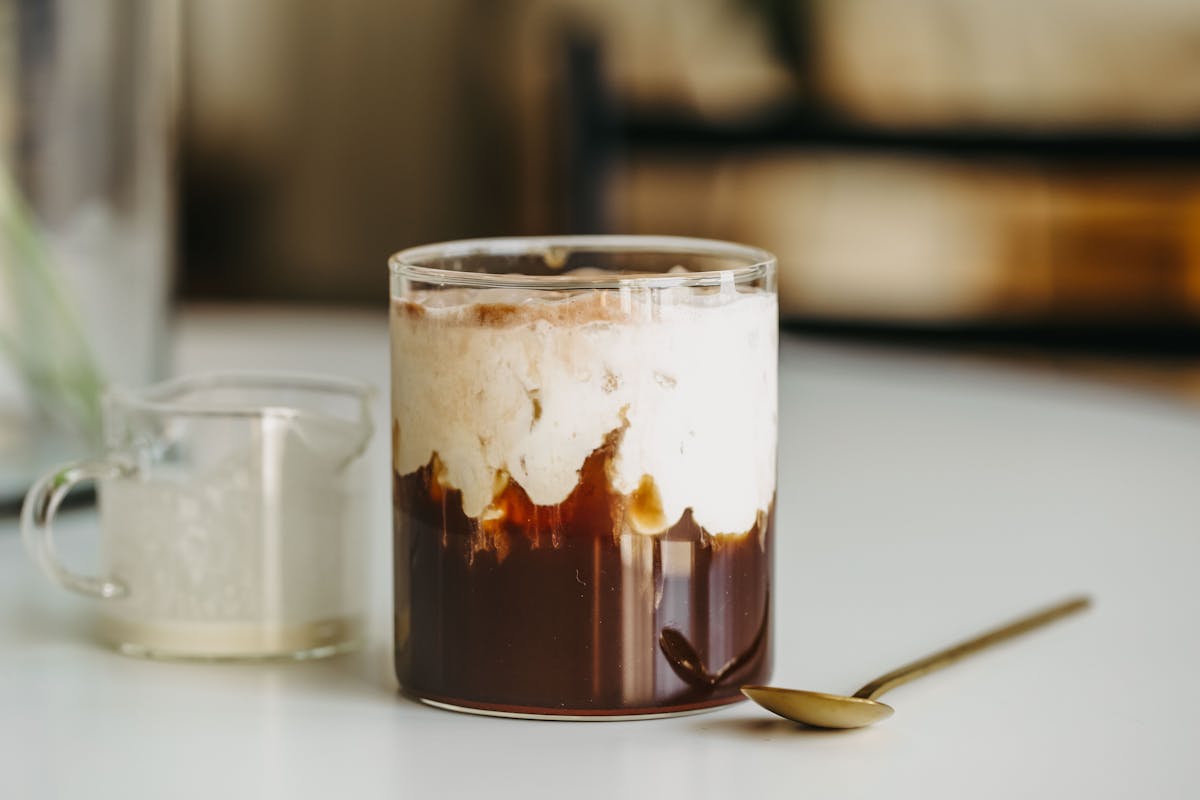
Cold, creamy and delicious - This chocolatey cold brew recipe is the perfect treat to kickstart your morning! The Recipe Chocolate Cream Cold Brew Prep Time: 1 minutes Cook Time: 5 minutes Ingre...
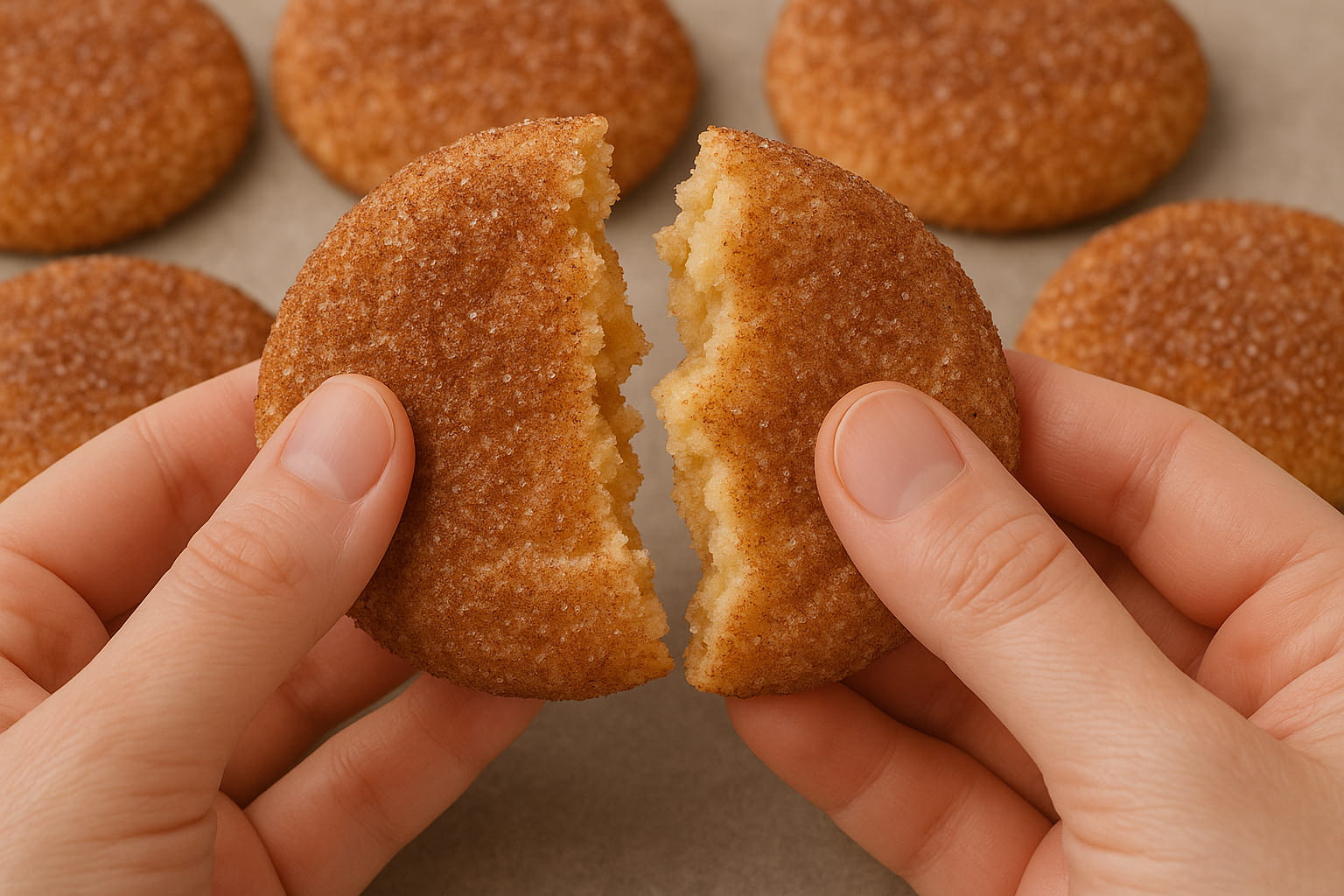
Indulge in the warm embrace of autumn with Pumpkin Spice Snickerdoodles - soft, spiced, and utterly irresistible! The Recipe Pumpkin Spice Snickerdoodles Prep Time: 10 minutes Cook Time: 1 hour ...
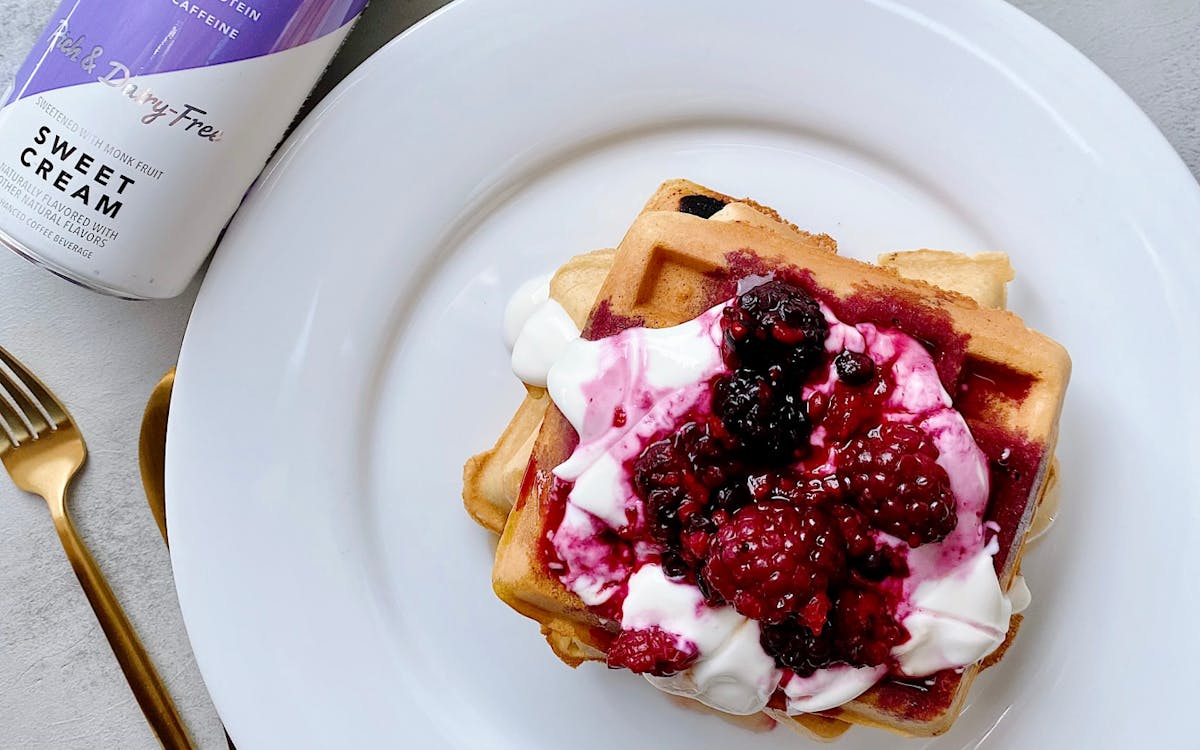
Low Carb Berries & Cream Waffles
These low carb/low sugar waffles are delicious, wonderfully crispy on the outside, and fluffy on the inside. You can also double batch and freeze for easy weekday breakfasts. Featuring our almost-...
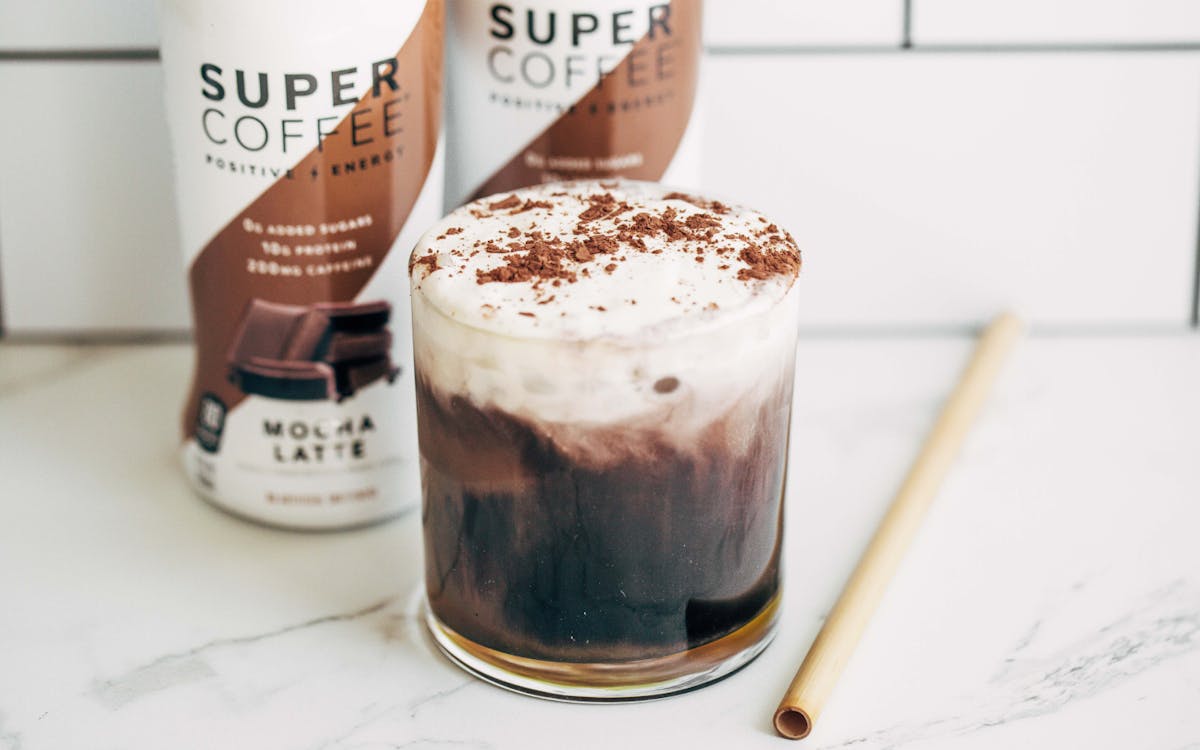
This may be the most fun latte recipe we’ve tried yet! With gooey & decadent black chocolate drizzle and a thick layer of creamy French Vanilla, just one sip of this iced latte will transport ...
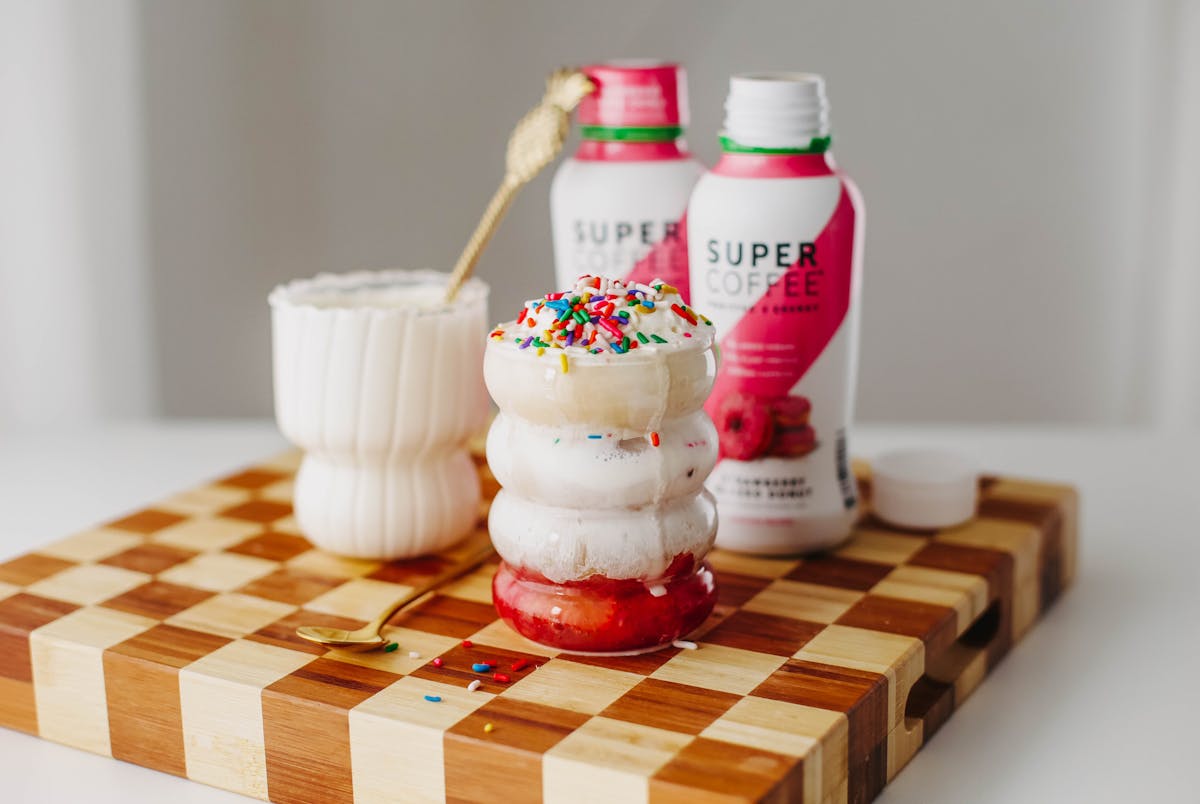
Strawberry Sprinkle Keto Coffee Recipe
Nutritional Info Calories: 274 Fat: 26.7g Carbs: 5.7g Protein: 4.5g Sugar: 2.1g Ingredients 3 strawberries, sliced. 3-4 tbsp heavy cream or half & half. Enough ice to fill a glass. 1/2 cup S...
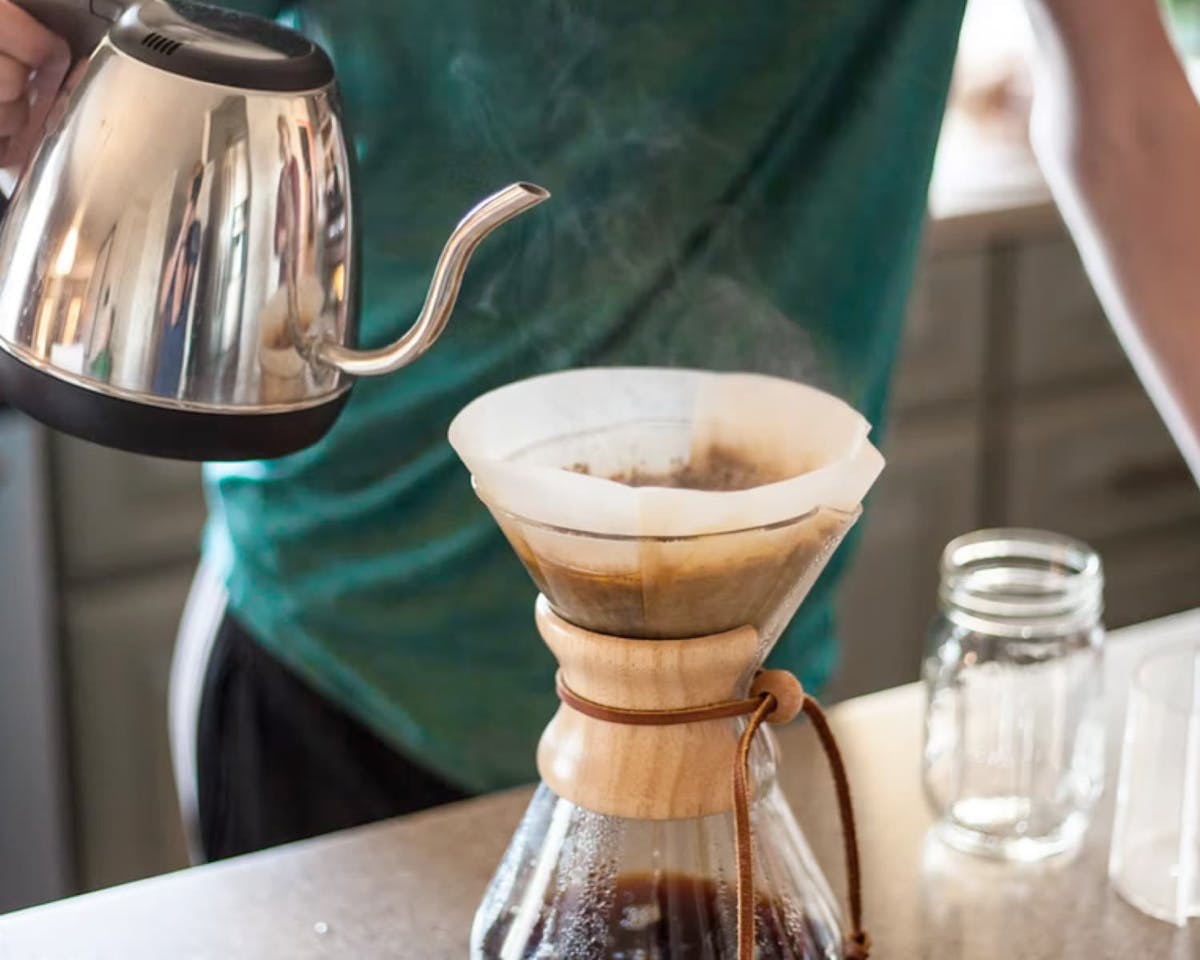
8 Healthy Coffee Recipes That Are Better Than Starbucks
There’s no question about it. Coffee is good for you. Those who don’t like black coffee, of course, commonly add milk, cream and sugar – even if that also means adding calories, fat or carbs to the...



